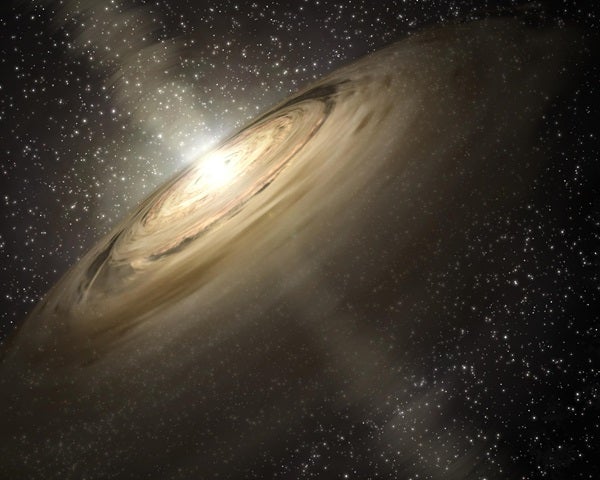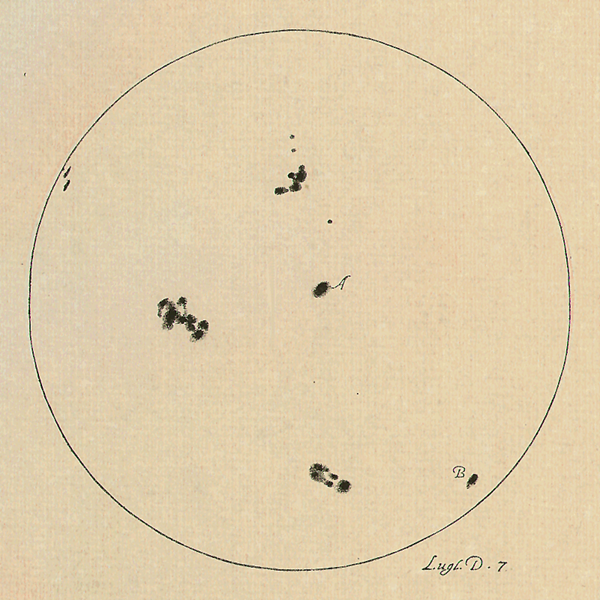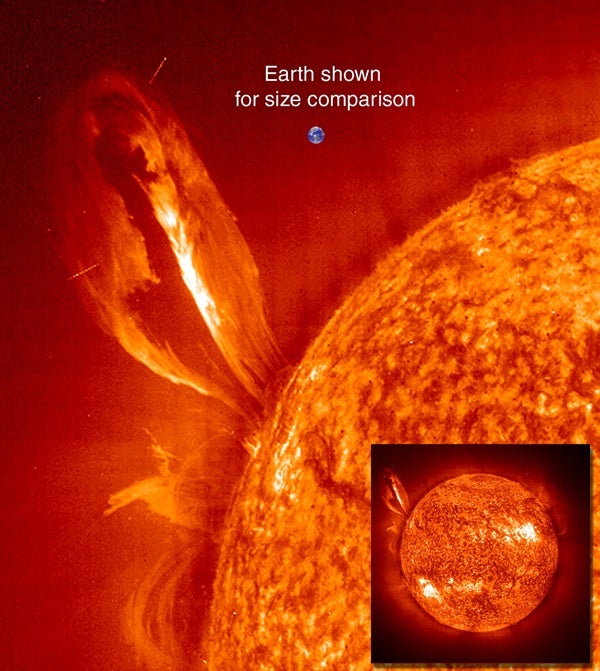Press shift question mark to access a list of keyboard shortcuts
The Sun, like every other star, started its life as a giant cloud of mostly hydrogen gas. This cloud slowly condensed and collapsed under the force of gravity until there was enough pressure at the core to commence nuclear fusion, and the Sun turned on.
Compared to other stars, our Sun is quite average. If we plot all the different kinds of stars by their temperature and brightness, the Sun sits neatly in the center. Given its size and age of 4.5 billion years, the Sun is roughly halfway through its main sequence lifetime, the period when it converts hydrogen in its core to helium. Once it runs out of this fuel, it will start to expand into its red giant phase, and fuse helium instead. Our Sun will get brighter and puffier until it casts off its outer layers, leaving behind a hot, glowing core called a white dwarf, surrounded by a beautiful planetary nebula.
By observing sunspots’ coming and going for decades in the 19th century, astronomer Samuel Schwabe identified the now-familiar 11-year solar activity cycle. A decade or so later, astronomers traced the cycle to periods of geomagnetic activity on Earth, thereby discovering the concept of space weather. It turns out the Sun is nearly always spitting out charged particles we call the solar wind, and like any wind, it rises and falls over time. The easiest way to observe this activity is through the aurorae, the Northern (or Southern) lights that emerge when the solar wind blows more strongly. But what causes these observable effects?
The Sun rotates, just like all the other bodies in the solar system. But because the Sun is not solid, the region near its equator rotates once every 24 days or so, while the polar regions take about 31 days. This leads to complicated twists and knots in the Sun’s magnetic field, until eventually the north and south magnetic poles completely flip, roughly once every 11 years (though periods as short as 9 years and as long as 14 have been recorded, making it incredibly difficult to predict the solar cycle with any certainty). In between these flips, the tangle of magnetic field lines gives rise to all the observable phenomena on the Sun.
These days a whole suite of telescopes and satellites monitor the Sun 24/7, notably STEREO and the Solar Dynamics Observatory, keeping us more informed than ever.
Expand your knowledge at Astronomy.com
Check out the complete Astronomy 101 series
Learn about our stellar neighborhood with the Tour the Solar System series
Read about the latest astronomy news












